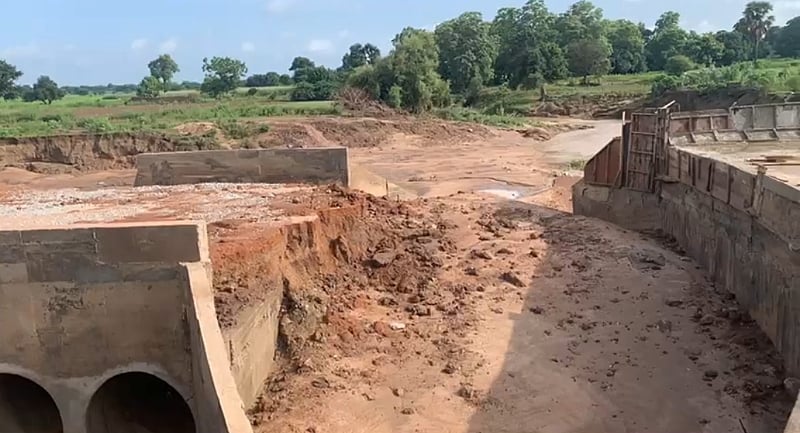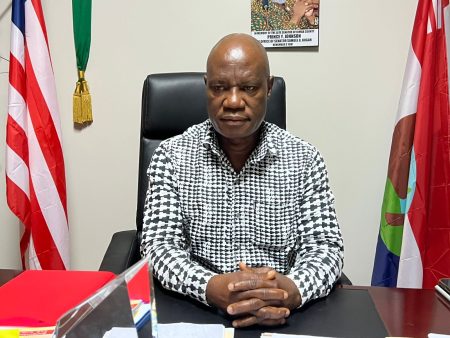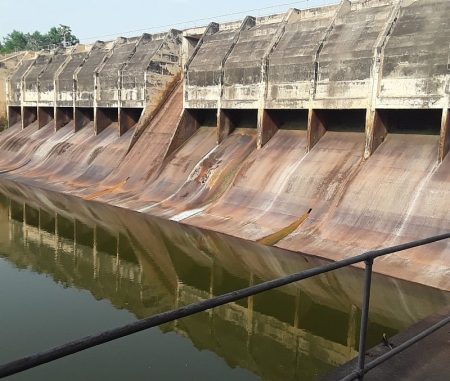The Tempane District in Ghana’s Upper East Region has been ravaged by heavy rains, leaving a trail of destruction and isolating communities. Critical bridges connecting Bugri, Wariyanga, Akara, Tempane, and Garu have been washed away, severing vital transportation routes and disrupting access to essential services, including healthcare and markets. The Bugri Bridge, a lifeline for the predominantly farming community of Bugri, has collapsed, rendering the transport of agricultural produce impossible. Similarly, the bridge linking Akara and Wariyanga has been destroyed, further compounding the challenges faced by these interconnected communities. The main bridge connecting Tempane and Garu has also succumbed to the force of the floodwaters, exacerbating the already dire situation. This widespread infrastructural damage has plunged the region into a state of crisis, threatening livelihoods and jeopardizing the well-being of its residents.
The collapse of these bridges has had a cascading effect on various aspects of life within the affected communities. Healthcare delivery has been severely hampered, as patients requiring urgent medical attention and referrals to larger hospitals are now stranded. Akologo Issaka, a health worker in the region, has highlighted the devastating consequences of this situation, reporting that lives are being lost due to the inability to access timely medical care. Farmers, the backbone of the local economy, are in despair as their harvested crops, including maize, millet, groundnuts, and onions, are at risk of rotting due to the inability to transport them to markets. The disruption to trade routes has dealt a heavy blow to the livelihoods of farmers and traders alike, leaving them with mounting concerns about their economic future.
The plight of pregnant women in the region is particularly alarming. Salamatu Morow, a trader, recounted a harrowing incident where a pregnant woman was forced to give birth on a riverbank because the damaged bridge prevented her from reaching a hospital. This underscores the precarious situation faced by expectant mothers and the urgent need for intervention. Furthermore, with schools reopening, children now face perilous journeys across the damaged infrastructure, putting their safety at risk. The situation has become a humanitarian crisis, demanding immediate action to alleviate the suffering of these vulnerable populations.
The devastation wrought by the floods has evoked profound emotional responses within the affected communities. Seidu Abugri, a community elder, expressed his anguish in tears, recounting instances of travellers losing their lives due to the treacherous conditions of the collapsed bridges. His heartfelt plea to the Member of Parliament for Tempane, Hon. Lydia Akanvariba Adakudugu, highlights the desperation of the residents and their urgent need for assistance. The destruction of these bridges has not only disrupted their daily lives but has also eroded their sense of security and well-being. The lack of accessible transportation has cut off families from each other, creating feelings of isolation, fear and uncertainty about the future.
Adding to the residents’ frustration is the perceived poor quality of recent construction work on the bridges. A local teacher criticized the project as a “waste of resources,” pointing out that the bridges, despite being less than a year old, were already showing signs of structural weakness, including visible cracks. This has raised concerns about the allocation of resources and the oversight of infrastructure projects in the region. The fact that traders are now forced to carry goods on their heads across makeshift pedestrian diversions further emphasizes the inadequacy of the current infrastructure and the urgent need for robust and sustainable solutions.
The residents of Bugri, Wariyanga, Akara, Tempane, and Garu are now appealing directly to President John Dramani Mahama to fulfill his promise to the people of Tempane and provide swift assistance in their time of need. They are calling for immediate action to rebuild the damaged bridges and restore vital transportation links. The collapse of these bridges has exposed the vulnerability of these communities and highlighted the critical need for investment in resilient infrastructure that can withstand the impacts of extreme weather events. The situation demands a comprehensive response that addresses both the immediate needs of the affected communities and the long-term development challenges that have contributed to their current predicament. This includes not only rebuilding the bridges but also investing in preventative measures, like flood control measures and improving the overall road networks to make them less susceptible to the impacts of climate change. Furthermore enhancing drainage system to handle large amounts of rainwater would go far in preventing this type of catastrophe from happening again. It is also important to improve weather forecasting and early warning systems to give the communities ample time to prepare and possibly evacuate when severe weather threatens.














